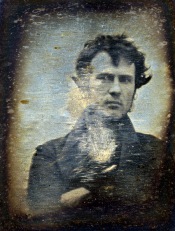I live in Brighton, one of the UK’s largest media hubs outside of London. As a resident here for five years, I can vouch for the fact that business is booming.
As an increasing number of media start-ups spread their wings to the tempestuous winds of digital media, even the most reluctant companies now realise that social media is a very powerful business tool.
Ok, so this isn’t news. But while social media in business may be at an all time high, a lot of organisations haven’t cottoned on to the one thing that actually makes a good social media strategy work. I’m talking about content. And not just any content; quality content.
Learning from past mistakes
As a content consumer, as well as a professional copywriter, I can safely say that organisations tend to have one of two problems. They either have no idea what decent content is, or they understand the importance of having it, but don’t know how to produce it. The result is a quagmire of spam content and poorly written copy. What many still fail to grasp is that good content is not something that floats on the surface of your social media strategy; it is an irrevocable part of it.
This week, Facebook turned 10 years old. Hark back for a moment to those days of silence, before we had pictures of puppies and babies shoved down in our faces at every turn. When social media was in its infancy, it was largely ignored by businesses, and understandably so; it exploded with the volatile speed of any five-minute fad, and it took a while to trust that it was here to stay.
However, the more savvy organisations out there soon got to work hiring a social media expert, while those with limited budget (or limited understanding) simply gave the responsibility of managing social media to an intern, with the general sentiment; ‘Well, they’re young. They get it.’
The side-effects of user generated content
While I hope most now realise that being under 25 and having a Facebook profile does not automatically equate to being a social media expert, the same can not be said for good copy. Just as businesses used to believe that youngsters were the best people to manage their social media, the boom in user-generated content has encouraged the belief that anybody can write effective copy.
And let’s face it, user generated content makes up a lot of the Internet. It is a crucial part of social media, because as the name suggests, it involves the user, which drives engagement and builds loyalty. However, though it serves this very important purpose, it has also increased the widely held misconception that quality copy is the same as any copy. This is a problem, and not just for copywriters.
The rise of copy-wronging
In my recent hunt for new business, I’ve come across of a number of ‘copywriting agencies’ that have almost had me fooled… after some research, I’ve realised many of them are simply well-dressed but low-paying content mills, cashing in on two things; the desperation of penniless writers and the desperation of businesses who know that they need copy, but don’t realise that good copy is worth paying for.
What I and my fellow copywriters do (when we do it well) is a valuable and specialised skill. Unfortunately, there is a growing culture of copy-wronging – people who assume that if they can type, and are able to litter a few arbitrary key words into whatever they’re writing, then they are a bona fide copywriter.
Re-evaluating your situation
My suggestion is this: if you’re looking at your social media strategy this year, give a little more thought to your copy. Anyone can write, yes. But to write something that is informative, promotional, considers your target audience, takes into account your social media and business strategy, is well researched and does all this while simultaneously reading easily and keeping your reader awake, requires skill. Your readers will think anything else is just spam.
So next time you’re looking for some good copy, don’t go for the cheap option; go for the quality one. Even if it means investing a little more up front, having faith in the expertise of your copywriter and most importantly – in good copy – will pay off in the long run.
Looking for help with your content?
Will Hillier is a professional freelance copywriter; not a freelance copy-wronger. You can contact him here for help with you copy and your social media strategy.


